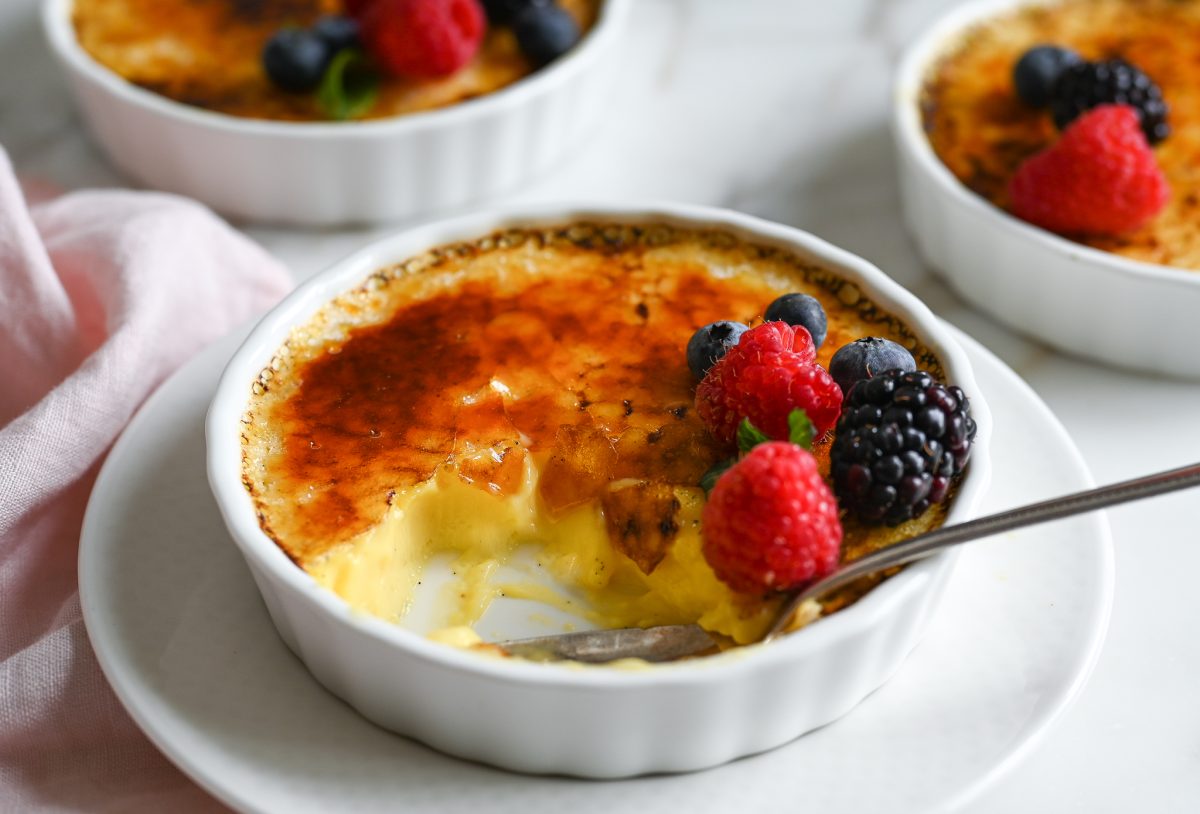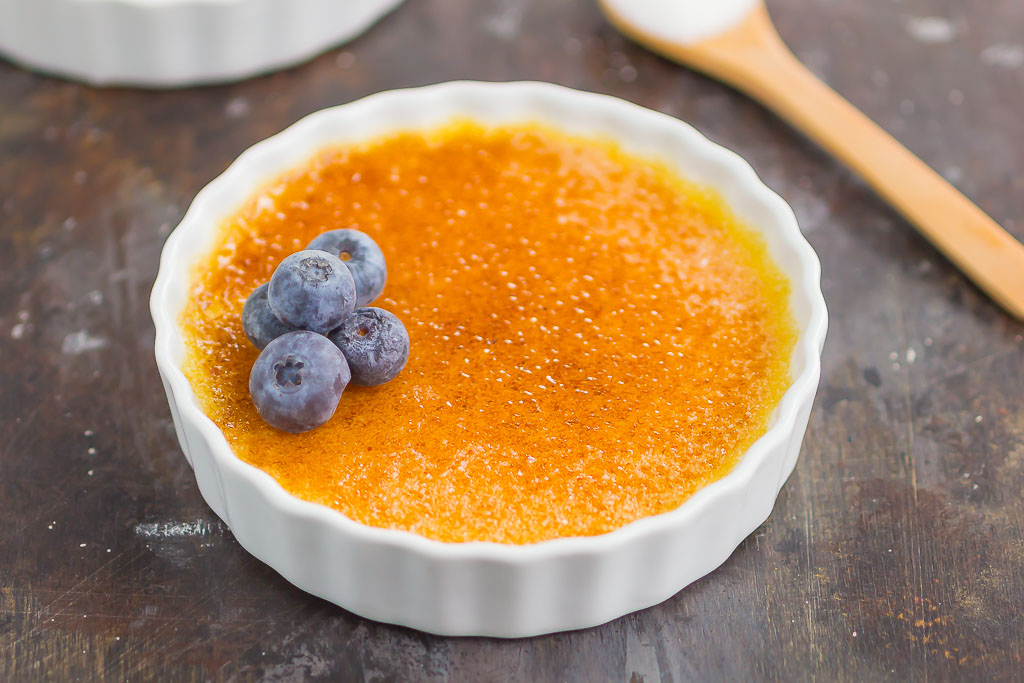Creme Brulee: Savor the Luxurious Delight of a Timeless Classic
Crème Brûlée, a dessert that epitomizes elegance and sophistication, has captured the hearts and palates of food lovers around the world. With its rich custard base topped with a contrasting layer of hard caramel, this timeless classic offers a luxurious experience that is both indulgent and unforgettable. In this article, we will delve into the history, preparation, and variations of Crème Brûlée, exploring why this delightful dessert continues to be a favorite.
The Origin of Crème Brûlée

Crème Brûlée, which translates to “burnt cream” in French, boasts a rich history that dates back centuries. The origins of Crème Brûlée are somewhat disputed, with France, England, and Spain all claiming to have created this delectable dessert. However, the earliest recorded recipe is believed to have appeared in a French cookbook in the late 17th century.
France’s Claim
In France, Crème Brûlée is often attributed to François Massialot, a chef who served at the court of Louis XIV. His 1691 cookbook, “Le Cuisinier Royal et Bourgeois,” contains a recipe for a dessert that closely resembles what we know today as Crème Brûlée. The French version traditionally features a rich vanilla custard base topped with a layer of caramelized sugar, achieved by using a hot iron or a blowtorch.
England’s Claim
Across the Channel, England lays its own claim to the dessert with a similar concoction known as “Trinity Cream” or “Cambridge Burnt Cream.” This version, associated with Trinity College, Cambridge, is said to have been served at the college since the 19th century. The English variation also includes a smooth custard base with a caramelized sugar topping, though it may occasionally be flavored with lemon or cinnamon.
Spain’s Contribution
Spain also has a contender in the form of “Crema Catalana.” This Spanish version, which predates the French and English recipes, features a citrus-infused custard base, often flavored with orange or lemon zest and a hint of cinnamon. Crema Catalana is traditionally served on Saint Joseph’s Day (March 19th) but is enjoyed year-round.
The Art of Making Crème Brûlée

Creating Crème Brûlée requires a delicate balance of technique and patience. While the ingredients are simple—cream, egg yolks, sugar, and vanilla—the process demands precision to achieve the perfect texture and flavor.
Ingredients
- Heavy Cream: The primary component of the custard, heavy cream provides a rich and creamy texture.
- Egg Yolks: Egg yolks are essential for thickening the custard and giving it a smooth, velvety consistency.
- Sugar: Sugar is used both in the custard mixture and for the caramelized topping.
- Vanilla: Pure vanilla extract or vanilla beans infuse the custard with a fragrant and flavorful aroma.
Preparation
- Custard Base: Begin by heating the heavy cream with a split vanilla bean or vanilla extract until it is warm but not boiling. Meanwhile, whisk together the egg yolks and sugar until the mixture becomes pale and thick. Slowly pour the warm cream into the egg mixture, stirring constantly to prevent the eggs from curdling.
- Baking: Pour the custard mixture into individual ramekins and place them in a baking dish. Fill the dish with hot water to create a water bath, which helps the custard cook evenly and prevents it from cracking. Bake at a low temperature (around 325°F or 160°C) until the custard is set but still slightly jiggly in the center, usually for about 30-40 minutes.
- Chilling: After baking, allow the custard to cool to room temperature before refrigerating for at least 4 hours or overnight. Chilling the custard ensures it sets properly and enhances the flavor.
- Caramelizing: Just before serving, sprinkle a thin layer of granulated sugar over the custard and use a kitchen blowtorch to caramelize the sugar until it forms a crisp, golden-brown crust. Alternatively, you can place the ramekins under a broiler, but a blowtorch provides more control.
Variations of Crème Brûlée
While the classic vanilla Crème Brûlée remains a beloved favorite, creative chefs and home cooks have experimented with numerous variations, adding unique flavors and ingredients to this timeless dessert.
Chocolate Crème Brûlée
For chocolate lovers, Chocolate Crème Brûlée offers a decadent twist on the classic recipe. By incorporating high-quality dark chocolate into the custard mixture, this version provides a rich and intense chocolate flavor that pairs beautifully with the caramelized sugar topping.
Coffee Crème Brûlée
Coffee Crème Brûlée combines the smoothness of custard with the bold flavor of coffee. Adding espresso or strong brewed coffee to the custard base creates a sophisticated dessert that coffee aficionados will adore.
Fruit-Infused Crème Brûlée
Fruit-infused Crème Brûlée introduces a refreshing element to the traditional dessert. Popular variations include adding citrus zest (such as orange or lemon), berries (like raspberries or blueberries), or tropical fruits (such as mango or passion fruit) to the custard. These fruity additions provide a burst of flavor and a vibrant contrast to the creamy custard.
Spiced Crème Brûlée
For a warm and aromatic twist, Spiced Crème Brûlée incorporates spices like cinnamon, nutmeg, and cardamom into the custard. These spices infuse the dessert with a comforting and exotic flavor profile, perfect for the colder months or festive occasions.
The Allure of Crème Brûlée

The enduring popularity of Crème Brûlée can be attributed to several factors that make this dessert a standout choice for special occasions and fine dining experiences.
Textural Contrast
One of the most appealing aspects of Crème Brûlée is the delightful contrast between the smooth, creamy custard and the crisp, caramelized sugar topping. The act of cracking the caramel layer with a spoon and diving into the luscious custard beneath creates a sensory experience that is both satisfying and indulgent.
Versatility
Crème Brûlée’s versatility allows it to be adapted to various flavor profiles and dietary preferences. Whether enjoyed in its classic vanilla form or with creative variations, this dessert can be tailored to suit individual tastes and seasonal ingredients.
Visual Appeal
The presentation of Crème Brûlée is as elegant as its flavor. Served in individual ramekins with a perfectly caramelized top, this dessert exudes sophistication and charm. The golden-brown sugar crust adds a touch of glamour, making it an ideal choice for formal dinners, romantic evenings, or celebratory gatherings.
Timeless Elegance
Despite its long history, Crème Brûlée has maintained its status as a timeless classic. Its simplicity and elegance have transcended culinary trends, allowing it to remain a beloved dessert across generations. The luxurious experience of savoring Crème Brûlée continues to captivate dessert enthusiasts worldwide.
Tips for the Perfect Crème Brûlée
To ensure your Crème Brûlée turns out flawlessly every time, consider these expert tips:
- Use Fresh Ingredients: Opt for fresh, high-quality ingredients to achieve the best flavor and texture. Fresh cream, eggs, and vanilla beans make a significant difference in the final result.
- Control the Temperature: When heating the cream, avoid boiling it, as this can affect the custard’s texture. Similarly, bake the custard at a low temperature to prevent it from curdling or cracking.
- Strain the Mixture: Before pouring the custard into the ramekins, strain the mixture through a fine-mesh sieve to remove any lumps or impurities. This ensures a smooth and silky custard.
- Caramelize with Care: When caramelizing the sugar, use a kitchen blowtorch for the best results. Move the torch in a circular motion to evenly melt the sugar and create a uniform crust. Be mindful not to over-burn the sugar, as this can result in a bitter taste.
- Serve Fresh: Crème Brûlée is best enjoyed fresh. While the custard can be prepared in advance, caramelize the sugar topping just before serving to maintain its crispness.
Conclusion
Crème Brûlée is a dessert that embodies luxury, sophistication, and timeless appeal. Its rich history, delicate preparation, and endless variations make it a favorite among dessert enthusiasts and chefs alike. Whether enjoyed in its classic gengtoto vanilla form or with creative twists, Crème Brûlée offers a sensory experience that is both indulgent and unforgettable. By mastering the art of Crème Brûlée, you can bring a touch of elegance to any occasion and savor the luxurious delight of this timeless classic.
